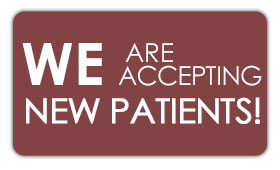Do you experience pain while chewing, opening your mouth wide or yawning? Do you complain of pain or soreness in front of the ear, around the jaw muscles or temples? Do you have pain or soreness in your teeth? Does your jaw make noises loud enough to bother you or others? Does your jaw ever get stuck/locked when you open it? If you answered, “yes” to any of these questions, there is a chance that you have temporomandibular joint disorder (TMD). TMD is an umbrella term covering pain and dysfunction of the muscles that move the jaw and the temporomandibular joint (TMJ). Approximately 25% of the adult population is affected with TMD, to some degree. Typically, this ailment affects females more than males (4:1), especially in the 20 to 40 year old demographic. A vast majority of these individuals also have oral para-functional habits, which include bruxism (tooth-clenching and/or grinding), tongue thrusting, fingernail biting, pencil or pen chewing, mouth breathing and any other habitual use of the mouth, unrelated to eating, drinking, or speaking.
Signs of temporomandibular joint disorder often include: limited movement or locking of the jaw, radiating pain in the face, neck, or shoulders, painful clicking, or grating when opening or closing the mouth, headaches, earaches, dizziness, hearing problems or difficulty swallowing. Some patients even have a change in the way that the upper and lower teeth fit together.
Temporomandibular joint disorders can be grouped into several categories. These include 1) myofascial pain, which is characterized by discomfort or pain in the muscles of the jaw, neck and shoulders 2) a dislocated jaw or displaced disc at the temporomandibular joint or 3)arthritis, such as degenerative joint disease or rheumatoid arthritis in the temporomandibular joint.
Temporomandibular joint disorders are often caused by injury to the jaw or overuse syndromes. Injuries, such as a blow to the jaw during a sporting activity or motor vehicle accident, are the most common. Overuse syndromes, such as clenching, chewing gum excessively or chewing on one side of the mouth may also cause TMD. Both physical and emotional stress can also lead to TMD. Although emotional stress itself is not usually a cause of TMD, the way stress shows up in the body can be. When people are under psychological stress, they may clench their teeth, which is a major contributing factor to TMD.
To help diagnose or rule out TMD, your doctor will ask you to open and close your mouth and chew repeatedly, while he or she monitors the jaw joint and the balance of the muscles. Your doctor may also administer an orthopedic test and check the range of motion of the jaw, particularly how far can you open it. From the tip of your upper teeth to the tip of your lower teeth, the jaw should open more than 40 mm. An easy way to measure this is with your fingers – if you can fit 3 or more fingers between your teeth, you are less likely to have TMD.
If you have TMD, your doctor may recommend chiropractic manipulation, massage or orthopedic devices such as splints, heat/ice, medication and/or special exercises. Surgical intervention should be a last resort and only considered after conservative treatment has failed.
Here are 4 tips to help treat TMD: 1) Apply heat and ice to lessen the pain. Ice is recommended shortly after the injury or after your pain has started. In the later stages of healing, you may need to switch to heat, especially if you are still experiencing discomfort 2) Perform TMD-specific exercises. Depending on your condition, your doctor may recommend stretching or strengthening exercises. Stretching helps to loosen tight muscles and strengthening helps to tighten muscles that have become loose. 3) Try to break “oral para-functional habits.” I tell my patients to put stickers on things that they look at often (cell phone, rear view mirror, computer monitor), to remind them that if they are clenching at the time, to return their jaw to a resting position. The resting position of the jaw is 1) Lips closed (no mouth breathing) 2) Teeth not touching (no clenching) 3) the tongue placed lightly on the roof of the mouth as if you were saying the letter N. And tip 4) No forward head posture (ears should be over the shoulders). A research study in the Journal of Oral Rehabilitation found that improved posture resulted in improved outcomes for TMD patients with muscle pain and limited mouth opening.

 I grew up in Dayton, Ohio and completed my chiropractic education at Logan College of Chiropractic in St. Louis Missouri. After graduating chiropractic school I moved to Nashville. I have practiced in Nashville for 10 years and Nolensville for over 7 years. I enjoy spending time with my family, dogs, golfing, kayaking, watching college sports and being an active member of the Nolensville community and serving its health needs.
I grew up in Dayton, Ohio and completed my chiropractic education at Logan College of Chiropractic in St. Louis Missouri. After graduating chiropractic school I moved to Nashville. I have practiced in Nashville for 10 years and Nolensville for over 7 years. I enjoy spending time with my family, dogs, golfing, kayaking, watching college sports and being an active member of the Nolensville community and serving its health needs.